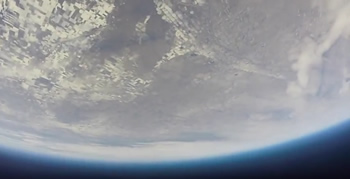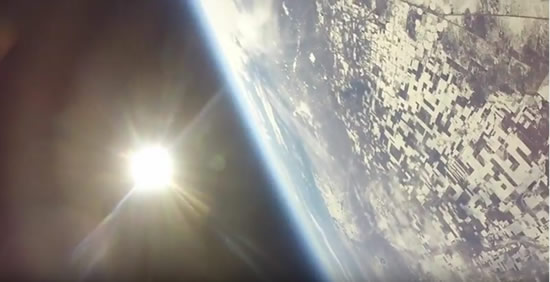
You have all heard this portion of the Monday night nets:
“We have a balloon repeater with a receive frequency of 445.975 MHz and a transmit frequency of 147.555 MHz. This repeater is flown periodically by the Edge of Space Sciences balloon launch group.”
But maybe you’ve never gone on to look up just what the Edge of Space Sciences balloon launch group is or does. From their web site:
What is EOSS
Edge of Space Sciences (EOSS) is a Denver, Colorado based non-profit organization that promotes science and education by exploring frontiers in amateur radio and high altitude balloons.
Since its first flight in 1990, EOSS has grown its volunteer membership’s numbers and skills over the course of more than 200 launches, ascents into the stratosphere and payload recoveries. Today, it is widely recognized as one of the premier organizations in its field.
EOSS was incorporated in the State of Colorado in 1991 and is recognized by both Colorado and the U.S. Government as a 501(c)(3), tax exempt, scientific and educational organization.

What We Do
Our members utilize amateur radio and balloons to advance scientific study of the upper atmosphere. We regularly work with educators, offering valuable opportunities to enhance their students’ studies of science, mathematics and technology through real, hands-on experience.
EOSS has conducted as many as thirteen balloon projects in a year, sending radio-equipped payloads deep into the stratosphere over eastern Colorado. Our typical apogee of 95,000 feet is above 99% of the Earth’s atmospheric mass, where the sky is black and the highest clouds remain far below. VHF and UHF radio signals transmitted from this height are received as far as 400 miles away!
Sometimes called the “Edge of Space”, this largely unexplored territory offers a wealth of opportunities for scientific observation and has even served as a reasonable approximation to outer space for testing prototype spacecraft. Gas balloons are the most practical means to get there, since rockets can visit it only briefly, and it is unattainable by ground-based aircraft. Because of the low cost of balloon flight expendables and recovery of payloads, one local high school teacher characterized EOSS as the “Poor Man’s Space Program”.
Individuals have many opportunities to exchange ideas with their fellow members. A monthly meeting is conducted the second Tuesday of each month.
On each remaining Tuesday, a radio meeting on-the-air, or net, is conducted at 8 P.M. During this “net” weekly updates on EOSS projects and news bulletins concerning amateur radio balloon projects around the country are discussed.
Please go to eoss.org for more information. See the current schedule in the text box marked “EOSS Upcoming Flights.”
They have flown many interesting missions over the years, with payloads from a variety of sources, from university students down to elementary school students. Check the EOSS YouTube channel for mission videos. RMRL member Skylar, KD0WHB, was involved in a mission when he was attending the Denver School of the Arts. You can see several videos from mission EOSS-218 on YouTube, but this short one captures some amazing images as it reached just over 94,000 ft. before bursting and heading back to earth.